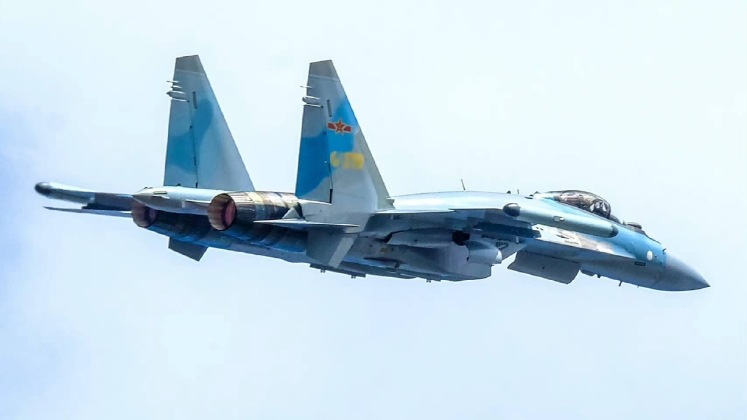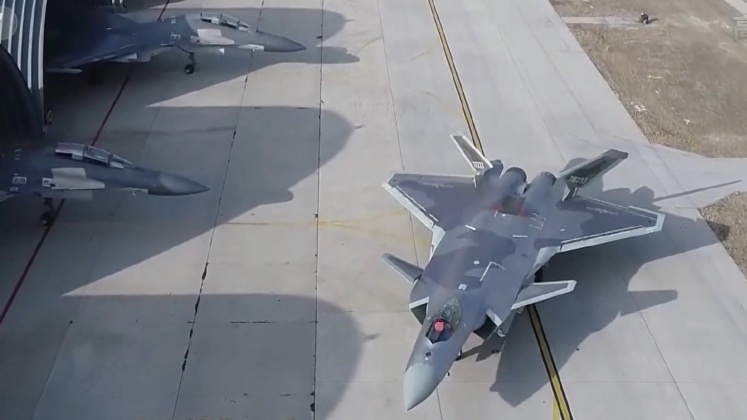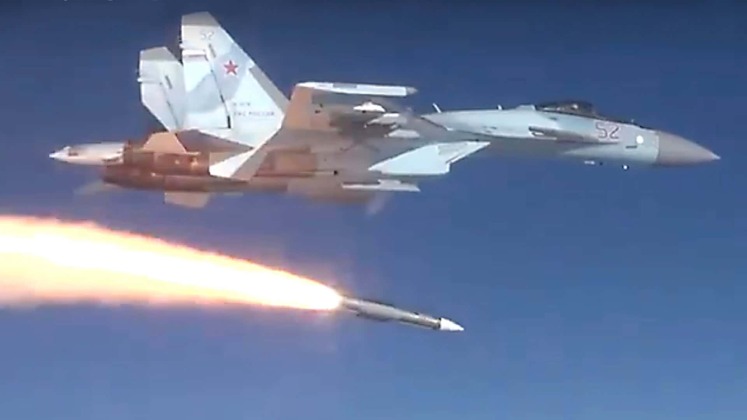News
How Buying Russian R-37M Missiles Could Make China’s Unimportant Su-35 Fighter Squadron Highly Useful
In November 2015 the Chinese Defence Ministry became the first client for the Russian Su-35S ‘4++ generation’ air superiority fighter, acquiring what in Russian service was considered a regiment’s worth of the aircraft comprised of two 12 strong battalions. The first of these were delivered in January 2017, and the last arrived in China in mid-2019. The acquisition surprised analysts for a number of reasons, not least because the Chinese People’s Liberation Army (PLA) Air Force already fielded more capable fighters, with the J-16 heavyweight fighter having entered service in 2015 with far superior missiles, greater use of composite materials, a far lower radar cross section and tremendous superiority in its avionics and sensors including integration of China’s first active electronically scanned array radar. The Su-35 is thought to have been acquired primarily to facilitate a technology transfer deal involving its thrust vectoring engines, a technology in which Russia comfortably led the world and which the PLA sought to integrate onto future iterations of its J-20 fifth generation fighter.

While China’s J-16 and J-10C advanced fourth generation fighters have proven capable of comfortably outperforming the Su-35 during exercises, the entry into service of the J-20 from 2017, and of the superior J-20A variant from mid-2021, left the Su-35 as one of China’s less capable fighters. This contrasted with the position of Chinese aviation when it acquired Su-27 fighters from 1991 and Su-30 fighters eight years later, acquiring over 100 of the former and 100 of the latter, with both having been far superior to anything domestic industry could produce at the time. The fact that only 24 Su-35s were acquired, while the PLA Air Force has acquired J-16s at rates of close to 30 per year, J-10Cs at close to 50, and J-20s at rates now close to 100 per year, reflect the significant discrepancy. This is despite the Su-35 being estimated to be a significantly cheaper aircraft to produce than the J-16 or J-20 due to its much lower use of composite materials and less advanced electronics.

While the Su-35’s ability to contribute to Chinese operations remains limited, a key limiting factor remains the inferiority of its air to air missiles. Its primary armament the R-77-1 has a 110km range compared to its Chinese counterpart the PL-15 which is estimated to have a 250km range. The R-74 visual range missile, meanwhile is much older and is limited to engaging targets over much narrower ranges of angles from the front of the aircraft compared to the Chinese PL-10, which is considered a close contender for the title of the world’s foremost short range air to air missile. The PLA Air Force does nevertheless retain a potentially promising option to increase the utility it can gain from the Su-35, namely acquiring the R-37M air to air missile from Russia to equip its sole squadron. The R-37M is an oversized missile with an impressive 400km range and Mach 6 speed, and was designed to threaten both fighters and support aircraft while being particularly dangerous against the latter. The missile began to be integrated onto Russian Air Force Su-35s from the late 2010s, and has been combat tested extensively in Ukraine. While the performance of Russian fighters in the theatre has been mixed, analysts on both sides have highlighted the R-37M for its outstanding performance contrasting to the other missile types Su-35 units are equipped with.

A key limitation on the Su-35’s ability to use the R-37M is that the fighter’s Irbis-E radar is not considered powerful enough to guide it to its full range. The missile was initially designed to be deployed by the MiG-31BM Foxhound interceptor which has a significantly more powerful radar, the N007M, and which can fire the missiles from much higher speeds and altitudes. As a result, Su-35s operating in Ukraine are forced to rely on support from airborne early warning and control (AEW&C) aircraft such as the A-50U to support their longer ranged strikes. A-50Us have also played an important role in facilitating the use of Russia’s its longer ranged surface to air missiles against low altitude Ukrainian targets. In Chinese service, however, fighters with much more powerful sensors than the Su-35’s are very widely fielded including J-16s, J-11BGs and J-20s, all of which could potentially provide targeting data to support Su-35s using R-37Ms. Furthermore, China not only fields far more AEW&C aircraft, but also far more sophisticated models than Russia does, with the KJ-500A possibly being the most capable in the world and rivalled only by the American E-7. The Chinese PLA Air Force is thus much better equipped to make full use of the Su-35’s ability to fire R-37M missiles than the Russian Air Force is. The R-37M’s will allow Su-35s to play important roles in conflicts in multiple theatres from the Korean Peninsula to the Taiwan Strait, and transform the class’ utility in PLA service which is currently very limited. The missile class will more than triple the fighters’ engagement ranges and thereby significantly increase their combat potential to help compensate for other deficiencies, with particularly high effectiveness against high value enemy targets such as AEW&Cs and bombers.












